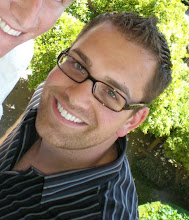My Colonoscopy has been schedule! This is my second colonoscopy in a year.
They are checking for tumors in my colon/intestines.
My colonoscopy is schedule for this Thursday October 7 at 3:30pm.
I have be at the hospital at 2:30pm.
How Do I Prepare for a Colonoscopy?
There may be some diet or fluid restrictions before you have a colonoscopy but this will vary according to your doctor's instructions. You may be asked to limit or eliminate solid foods for a few days before the test. You may also be asked to take laxatives by mouth. Along with the dietary changes, your bowel must be further cleansed in order for colonoscopy to be successful. You will receive 2 enemas before the procedure because the rectum and lower intestine must be empty so that the intestinal walls can be seen. You will need to try to hold the enema solution for at least 5 minutes before releasing it.
Make sure you arrange for a driver to bring you home after the colonoscopy. Because you receive sedating medication during the procedure, it is unsafe for you to drive or operate machinery for 8 hours after the procedure.
What Happens During a Colonoscopy?
The colonoscopy is performed by a doctor experienced in the procedure and lasts approximately 30-60 minutes. Medications will be given into your vein to make you feel relaxed and drowsy. You will be asked to lie on your left side on the examining table. During a colonoscopy, the doctor uses a colonoscope, a long, flexible, tubular instrument about 1/2 inch in diameter that transmits an image of the lining of the colon so the doctor can examine it for any abnormalities. The colonoscope is inserted through the rectum and advanced to the other end of the large intestine.
The scope bends, so the doctor can move it around the curves of your colon. You may be asked to change position occasionally to help the doctor move the scope. The scope also blows air into your colon, which expands the colon and helps the doctor see better.
You may feel mild cramping during the procedure. You can reduce the cramping by taking several slow, deep breaths during the procedure. When the doctor has finished, the colonoscope is slowly withdrawn while the lining of your bowel is carefully examined.
During the colonoscopy, if the doctor sees something that may be abnormal, small amounts of tissue can be removed for analysis (called a biopsy), and abnormal growths, or polyps, can be identified and removed. In many cases, colonoscopy allows accurate diagnosis and treatment without the need for a major operation.
What Happens After a Colonoscopy?
After your colonoscopy:
- You will stay in a recovery room for about 30 minutes for observation
- You may feel some cramping or a sensation of having gas, but this usually passes quickly
- You can resume your normal diet
Read your discharge instructions carefully. Certain medications, such as blood-thinning agents, may need to be avoided temporarily if biopsies were taken or polyps were removed.
Bleeding and puncture of the colon are rare but possible complications of colonoscopy. Call your doctor right away if you have any of the following:
- Excessive or prolonged rectal bleeding
- Severe abdominal pain, fever, or chills
Here is the crazy part of all of this..... I am not allowed to eat from Tuesday at midnight until after my colonoscopy. I am going to starve!! HA!
I have be to honest and say that I am not looking forward to getting a colonoscopy, but I am looking forward to getting the results of this test.
The results of the test will hopefully tell me a lot about what is going on.
So until Thursday, I wait....
.... sometimes I wish I was a bit more patient!

2 comments:
I'll be thinking about you on Thursday! xoxo
I'll pray for you Josh. I never knew so many details about this procedure. I'm not sure I wanted to.
Hugs,
Carl
Post a Comment